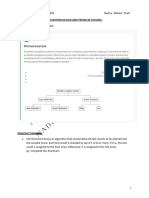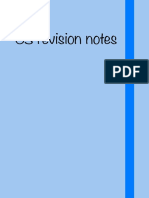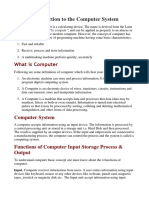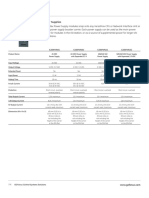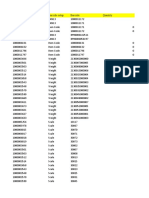0% found this document useful (0 votes)
16 views13 pagesUnit 7 - Revision Notes (CS)
The document outlines the program development life cycle, focusing on analysis, design, coding, and testing phases. It discusses the importance of decomposition in problem-solving, the design of algorithms using structure diagrams, flowcharts, and pseudocode, as well as standard methods for searching and sorting data. Additionally, it covers validation techniques, error identification, and the significance of algorithmic thinking in creating effective solutions.
Uploaded by
praraemahesaCopyright
© © All Rights Reserved
We take content rights seriously. If you suspect this is your content, claim it here.
Available Formats
Download as PDF, TXT or read online on Scribd
0% found this document useful (0 votes)
16 views13 pagesUnit 7 - Revision Notes (CS)
The document outlines the program development life cycle, focusing on analysis, design, coding, and testing phases. It discusses the importance of decomposition in problem-solving, the design of algorithms using structure diagrams, flowcharts, and pseudocode, as well as standard methods for searching and sorting data. Additionally, it covers validation techniques, error identification, and the significance of algorithmic thinking in creating effective solutions.
Uploaded by
praraemahesaCopyright
© © All Rights Reserved
We take content rights seriously. If you suspect this is your content, claim it here.
Available Formats
Download as PDF, TXT or read online on Scribd
/ 13







